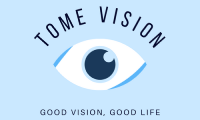What is 20/20 Vision and Is It Truly Perfect?
Good vision plays a crucial role in our everyday lives, allowing us to explore and experience the world around us in its full beauty. One commonly used measurement to assess visual acuity is the 20/20 vision scale. In this article, we will delve into what 20/20 vision means, how it is tested, and whether it truly represents perfect eyesight.
Defining 20/20 Vision:
When we talk about 20/20 vision, it refers to normal visual acuity. The testing process involves reading letters or symbols from a standardized eye chart placed at a distance of 20 feet. If you have this visual acuity, you can see what a typical person should be able to see at a distance of 20 feet. If you have 20/40 vision, for instance, it means you must be at a distance of 20 feet to see what a person with normal vision can see at 40 feet.
The Testing Process:
To determine visual acuity, optometrists or ophthalmologists use a Snellen chart, a standardized eye chart named after Dutch ophthalmologist Hermann Snellen. The patient is asked to read letters or symbols on the chart, starting from the top row. Each row progressively decreases in size, usually corresponding to acuity levels such as 20/40, 20/30, 20/25, and eventually 20/20. The smallest row read accurately determines the individual’s visual acuity.
Is 20/20 Vision Perfect?
While 20/20 vision is considered the standard for good eyesight, it does not guarantee perfect vision in every aspect. This measurement solely assesses a person’s distance vision, but other elements like peripheral awareness, color vision, and depth perception are not evaluated in the 20/20 test. Furthermore, someone with 20/20 vision can still face challenges with near vision, such as reading small text or focusing on objects extremely close to the eyes, which is common among individuals with presbyopia.
Understanding Other Vision Measurements:
In addition to the 20/20 scale, there are other important vision measurements that determine the overall quality of one’s sight:
1. Visual Field: The visual field test evaluates the entire scope of vision, including both central and peripheral vision. It assesses if any blind spots or visual impairments exist.
2. Color Vision: Color vision testing determines an individual’s ability to perceive and differentiate different colors accurately. Certain conditions, such as color blindness, affect this aspect of vision.
3. Depth Perception: Depth perception allows us to judge distances accurately. During a depth perception test, patients wear special glasses or complete a series of tasks that involve perceiving and identifying distances correctly.
In summary, 20/20 vision is a measure of visual acuity used to assess distance vision. While it is often regarded as normal and good visual health, it does not guarantee perfect vision in all aspects of eyesight. It solely evaluates one’s ability to see clearly at a standard distance. Other important measurements, such as visual field, color vision, and depth perception, contribute to the overall assessment of visual health. If you have any concerns about your eyesight, consult with an eye care professional who can evaluate your vision comprehensively and address any issues you may have. Remember, maintaining good eye health through regular check-ups is essential for a clear and vibrant perspective on life.
